SURVIVAL IN THE SADDLE • PART 7
Freeways. Interstates. Parkways. Expressways. “The Slab”. Whatever you call them is usually a local term. Today we’re going to talk about motorcycle safety on highways. This is the 7th installment in the “Survival in the Saddle” series. If you’re just joining us now you may want to look back at some of the previous posts about motorcycle safety tips and techniques. You can find them here:
Part 1: Intersections
Part 2: Stand Out From The Crowd
Part 3: The Art Of Riding In The Rain
Part 4: Just When You Thought You Were Safe
New Ways For Things To Go Badly
In the previous posts we discussed the most common hazards that motorcyclists face when they climb in the saddle. Statistically speaking (number of accidents, fatalities, etc) superhighway travel is a relatively safe proposition for two-wheelers. Gone is the possibility of oncoming traffic making an unexpected left hand turn in front of you. Virtually non-existent is the chance of oncoming traffic heading into your travel lane.
After fighting inattentive drivers while negotiating around-town traffic and parking lots, it’s almost a relief to get onto the relatively safe environs of the freeways. However this is no place to let down your guard. There’s a whole new set of things to be aware of and hazards to avoid.
Roads Less Traveled
I’m not a big fan of highway travel. I’ve done entirely too much of it in the past. These days I prefer to travel the backroads that are more technically challenging to two-wheelers. They also offer the best in scenic opportunities for a nature-loving photographer such as myself.
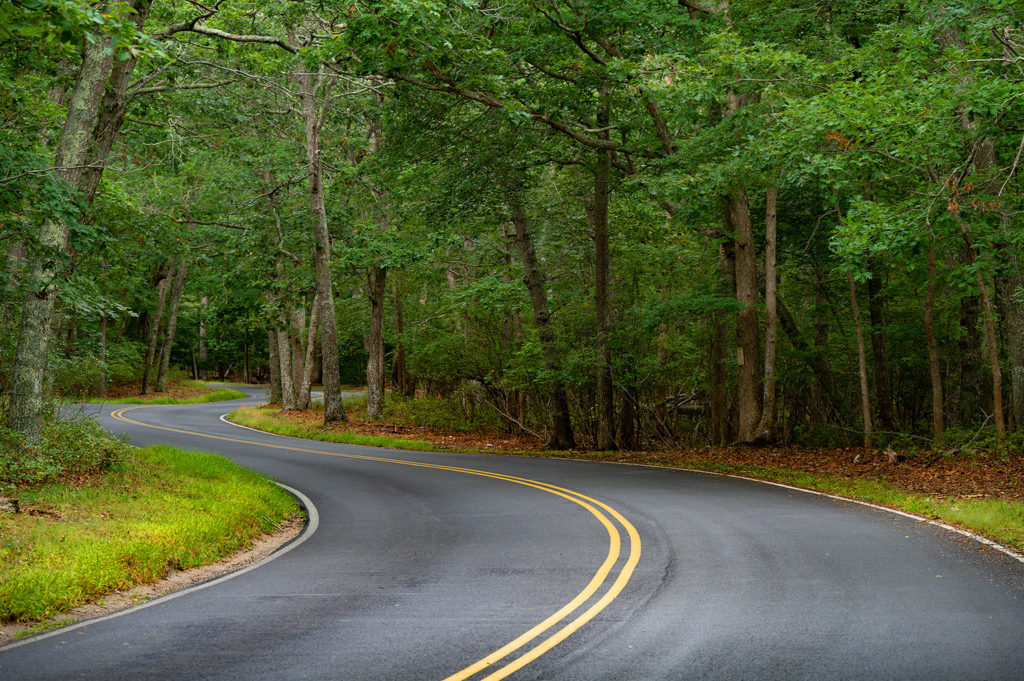
The type of road I prefer riding these days
Interstates are boring. They’re all the same…by design. They must meet certain criteria relative to controlled access, maximum grade, minimum number of lanes, shoulder width, median width, vertical clearance; and countless other regulatory requirements. The passage of the Federal Aid Highway Act of 1956 insured that interstates would be the most boring roads one could ever imagine traveling upon.
A Purpose To Serve
The big roads are a necessary evil, however. I live on Long Island; 40 miles out in the suburbs of New York City. I have to travel on major highways just to get my butt out of town. Once away from the concrete jungle I choose to travel on the millions of miles of scenic backroads that our country offers. That choice doesn’t give me a pass. I still have to concern myself with motorcycle safety on highways.
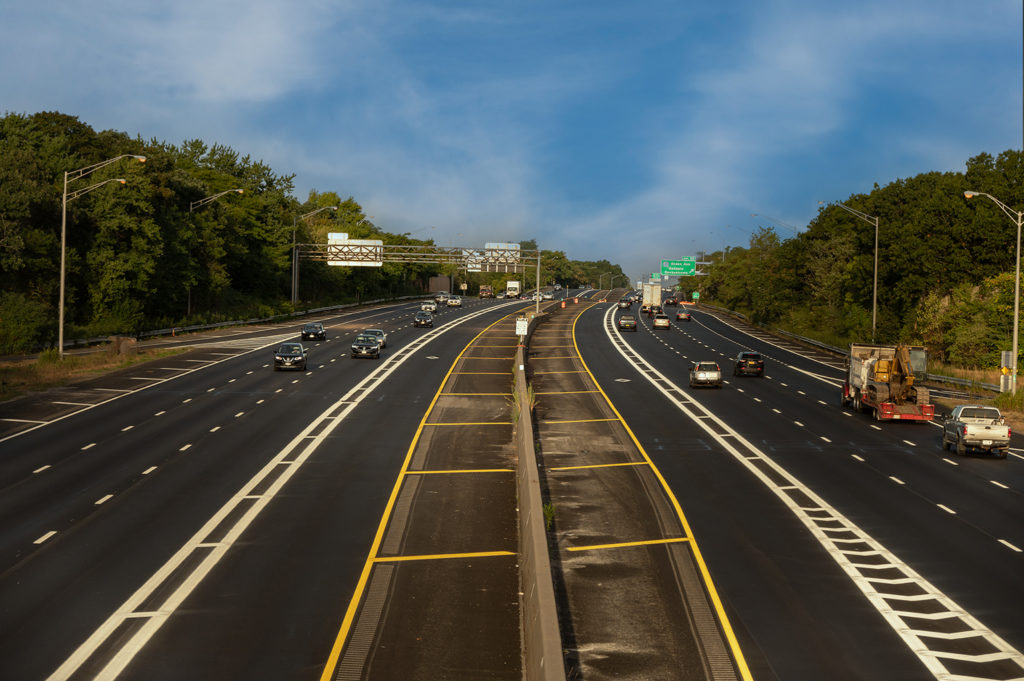
I-495, The Long Island Expressway, near my home
I refer to the big highways as Mileage Disposal Units. There are just a few scenarios when I’ll choose to use them after I’ve made my escape from Metropolitan New York. One is if I’m on a group ride along with other riders who may be on a tight travel schedule.
The other is when I’m hopelessly stuck in some severe weather pattern. I’ll use the major highways to quickly ride through large swaths of rain storms; and get to where better weather prevails. Even with the higher speeds that you’ll be maintaining, motorcycle safety on highways is better on the slab than on the less predictable back roads. You can read more about this fact in the previous post: “Storm Advisory • The Art of Riding In The Rain”.
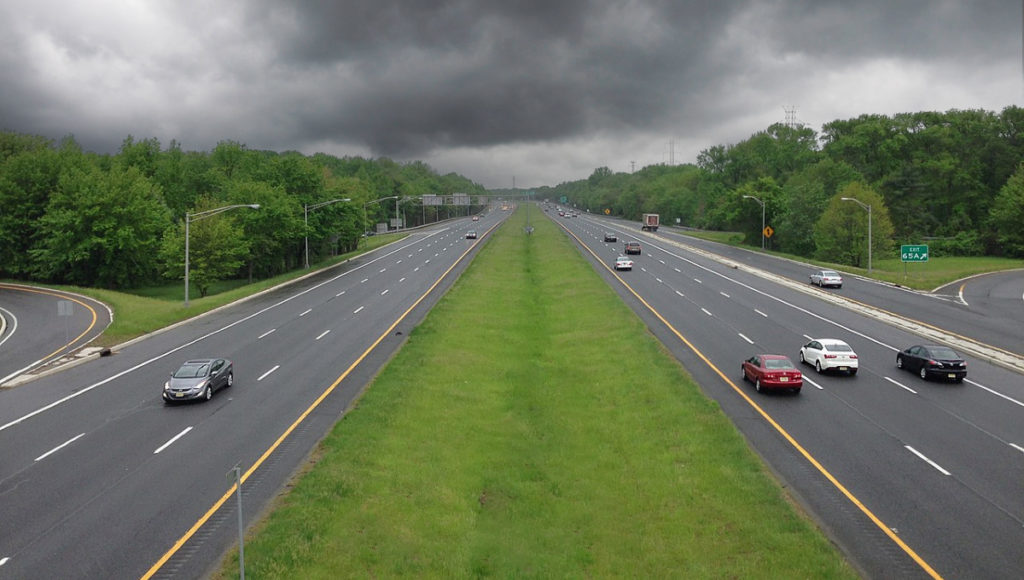
I take to the highways to ride through and escape storm systems
Life At Warp Speed
The first, obvious, challenge to motorcycle safety on highways is speed. Everything happens faster. A lot faster. In a previous post I recommended that you should always be paying attention to what’s going on 8-10 seconds ahead of you. Out on “the slab” I suggest that you be looking at least 12-15 seconds ahead. When you’re traveling at 65 MPH you’re covering more than 1/4 of a mile in those 15 seconds.
The average motorcyclist, on an average motorcycle, will use up 550 feet of that 1/4 mile to bring the bike to a complete stop once they have detected a threat and reacted accordingly. The sooner you respond to a threat ahead, the better your chances are of riding away without any unpleasant consequences. Your response time is 100% dependent upon your situational awareness. Pay attention to what’s going on around you and ahead of you.
Stay Focused
Have you ever had the experience of being passed by another vehicle that you never saw approaching? Have you ever looked back at the last few miles you traveled with no recollection of what you encountered? Be honest. I know I’ve been there.
When you’re laying down a bunch of highway miles at higher speeds it’s easy to become nonchalant. Lazy even. Inattentive. Keep in mind that it’s not just you experiencing this phenomenon. Everyone around you is in the same mindset. Relaxed. Distracted. Hypnotized. There’s a bunch of zombies out there using the interstates. Don’t be one of them. You’re better than that.
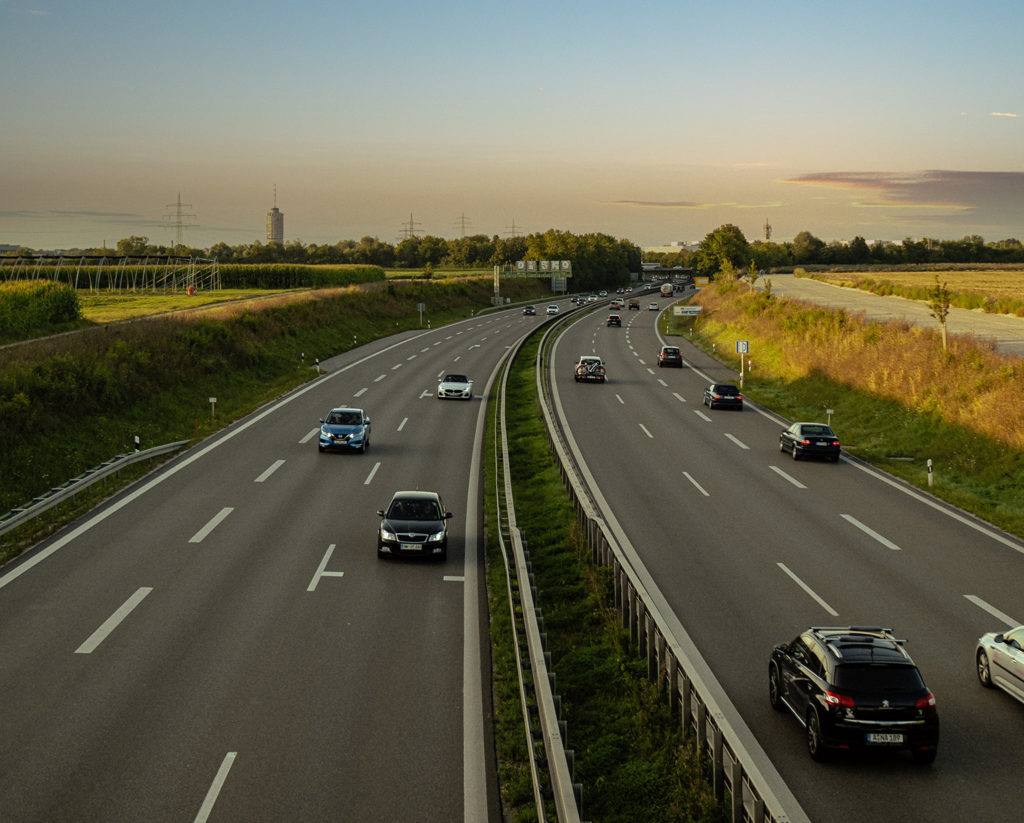
Relatively light traffic. Makes you wonder who is really paying attention out there
If you find your mind drifting away from the task at hand, snap out of it. Shake it off. Slap yourself on the side of the head. Yell at yourself. Stop and take some deep breaths. Have a cup of strong coffee. Whatever it takes. Motorcycle safety on highways demands it. You can’t afford to not be paying attention out there. Your life depends on it…especially at highway speeds.
Cover Your Brake To Cover Your Butt
At the first sign of trouble ahead roll off the throttle and cover your front brake lever and rear brake pedal. This might take the form of brake lights coming on ahead, vehicles swerving or abruptly changing lanes, debris flying…whatever. If the trouble materializes you’re well on your way to handling it. If nothing becomes of the situation you’ve lost nothing. A couple of miles per hour…maybe. And we all know how fast a motorcycle can get those few miles per hour back.
If something does become of the potential hazard ahead though, you’re in a far better place. You’ve already started decelerating. You’ve had time to assess your surroundings. You can look for potential escape routes. Check on the traffic that is following you. Take stock of the road surface conditions. All those things that you might not have been paying attention to if you’ve allowed yourself to be lulled into a state of complacency.
Lane Choice
Many motorcyclists have their own favorite lane in which they choose to ride out on the big roads. They will tell you why the left, center or right lane is their preferred position. The truth of the matter is that, statistically, no one lane proves to be better when considering motorcycle safety on highways.
The National Highway Traffic Safety Administration (NHTSA) figures show that 45% of motorcycle side collisions occurred on the left side, while 55% occurred on the right. Hardly enough of an overwhelming difference to make a case for which lane(s) are safer. To put that in perspective 95% of motorcycle fatalities involved the motorcycle hitting something head on, while only 5% involved the bike being rear ended.
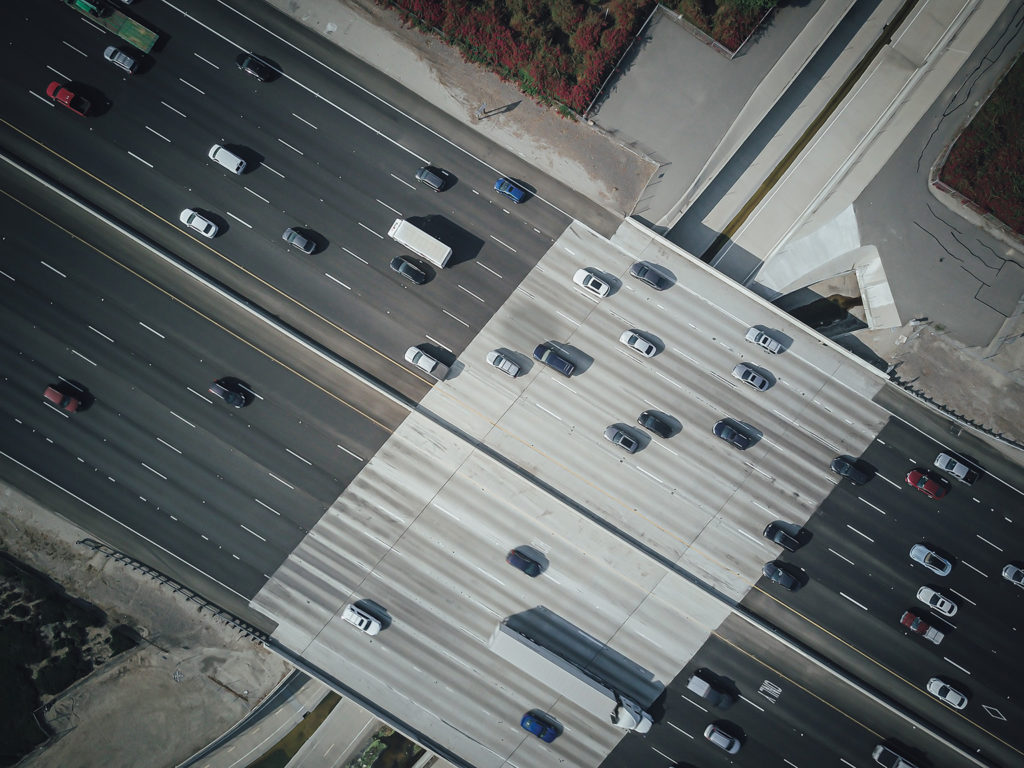
A California Freeway • 12 Lanes Wide!
I have no particular ‘favorite’ lane. In fact, I make a conscious effort to keep changing lanes as I travel the highway. It’s something I was taught by an MSF instructor nearly 40 years ago and has stuck with me since. A moving target is harder to hit. You stand a better chance of being seen by the vehicles ahead of you, and behind you, if you’re on the move a lot. I don’t care what those other drivers think about my apparently unnecessary lane changes. I care that they have noticed me! Visibility. Being seen by those you’re sharing the road with should be your primary consideration. Do whatever it takes to make that happen.
Lane Changes
While speaking of lane choice it should also be noted that lane changes are an action that requires more than casual consideration. Side swipe contacts are common on the super highways. I nearly fell victim to such an encounter earlier this year. I missed being taken out on the Pennsylvania Turnpike by mere inches. It would have been at least 1/2 my fault. It’s another one of those engagements that I’ll never forget. It taught me a lesson which I’ll never take for granted ever again.
If you’re making a lane change be ABSOLUTELY certain that another vehicle isn’t planning a similar move from the opposite side. If you both head for the same spot at the same time big trouble will ensue. In my case we came within inches of each other at 65 MPH before I could swerve away from impending doom. Remember what I said in the first post in this series: When a motorcycle goes one-on-one with another vehicle the motorcycle always loses! It doesn’t matter whose fault it was.
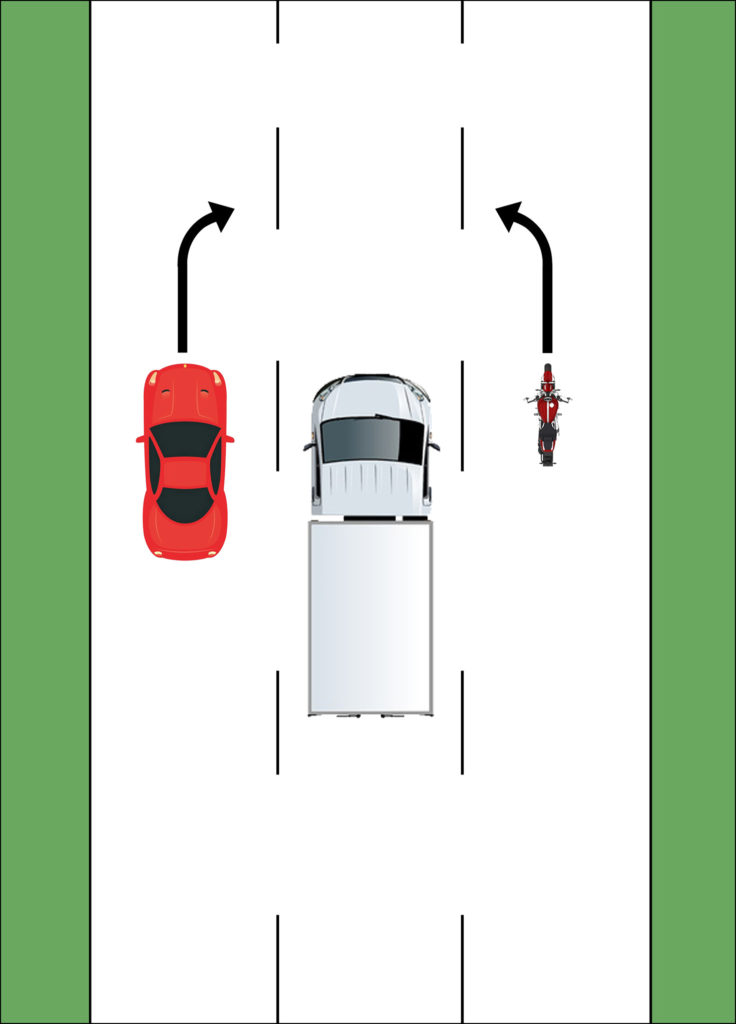
When changing lanes make sure no one else is doing the same!
Lane Position
While traveling in your chosen traffic lane pay heed to your position in that lane. I spend a bit of time moving around in my lane for increased visibility as discussed above. However I do pay particular attention to my position when I’m in the process of passing another vehicle.
I will adopt a position farthest away from the vehicle I’m passing. This affords a greater margin for safety if the driver of that vehicle starts to drift into my lane. It happens a lot these days. Drivers are preoccupied with their GPS navigators, mobile phones, audio systems and other components of their infotainment systems.
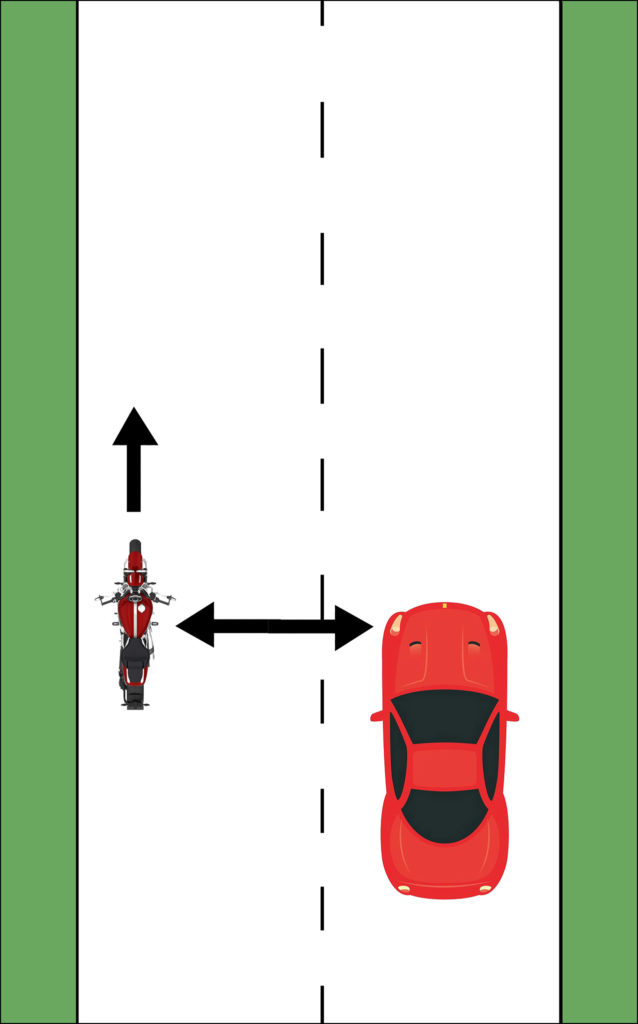
Taking the track farthest from the vehicle being passed
I take up a similar position when I’m being passed by another vehicle. Again, this reduces the chance of being side swiped by someone who cuts it too close. It also reduces the effect of wind turbulence when being passed by a high profile vehicle such as a truck or bus. The more room you allow between yourself and other vehicles, the more you’ll enjoy the benefits of motorcycle safety on highways.
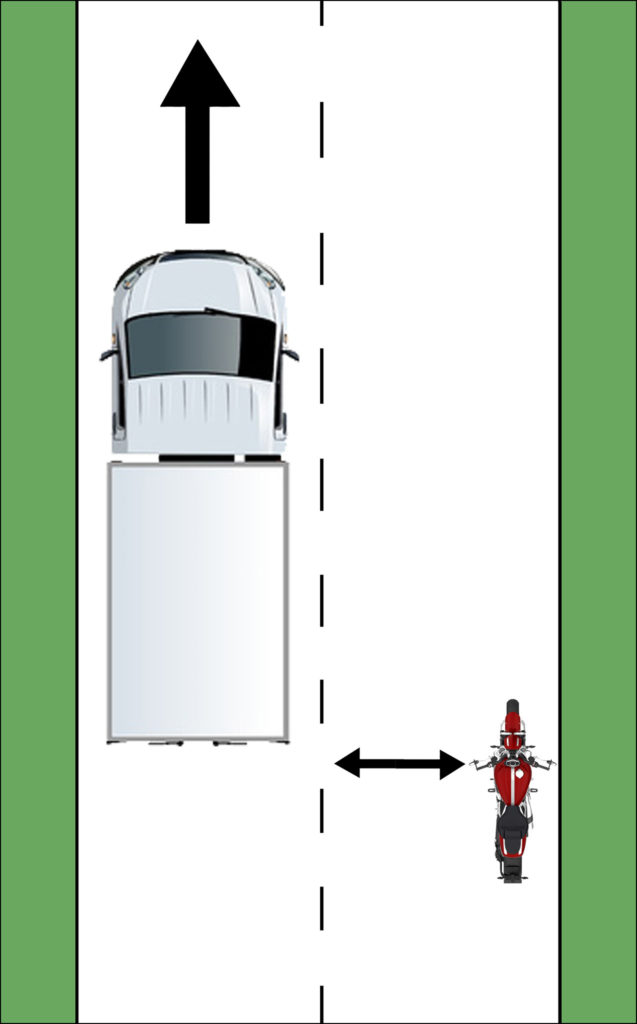
Allowing the most amount of room for the vehicle that is passing
More and more cars these days are equipped with collision avoidance systems that warn drivers when they are drifting from their lanes. These devices are a blessing and a curse. They may keep you from being struck by an inattentive driver carelessly drifting into your lane. They also lure drivers into a false sense of security and a less heightened sense of awareness. Trust in your own safe riding skills…not the other guy’s technology.
Stay Tuned For More Discussion of Motorcycle Safety On Highways
That about wraps it up for this episode. We still have a whole lot more to talk about when it comes to motorcycle safety on highways. In the next installments we’ll be talking about some other super highway considerations: merging traffic patterns, high profile vehicles, road hazards, traffic jams, lane splitting/filtering and the all-too-unpleasant topic of road rage. As always we welcome your comments below. Be sure to subscribe to Roadcraft USA to receive occasional email notifications when new posts drop on the blog. Ride safe, everyone!
Click Here to view an interactive visual index page where you can quickly browse through all of the great features that are published on the Roadcraft USA blog.

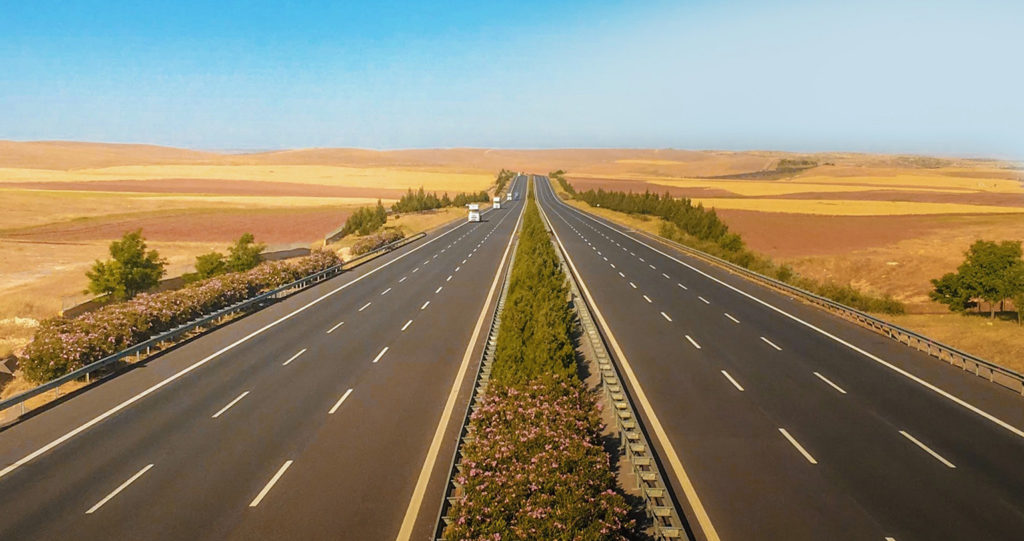
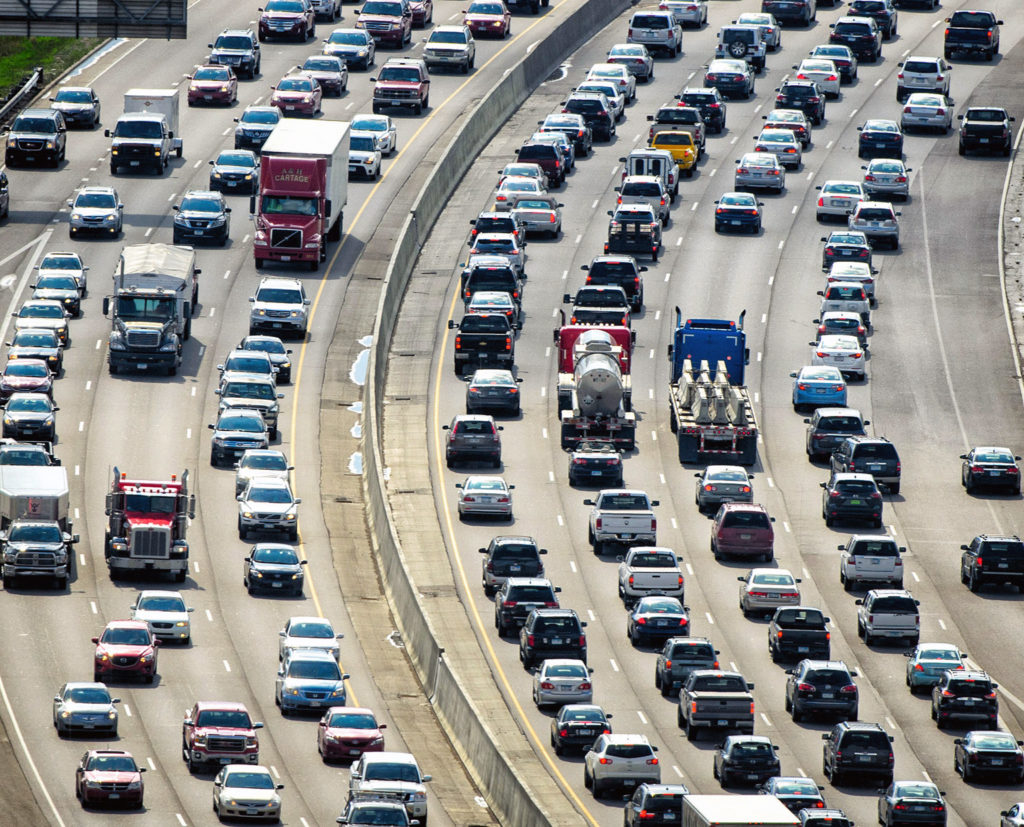
Great article! I’ve been riding for a very long time and found it informative. While you mentioned lane position while passing or being passed, you never mentioned position in your lane relative to cars in neighboring lanes while traveling the same or similar speeds — never, *ever* pace another vehicle in an adjacent lane. Always be in front of the car in the next lane, where you can be seen, or behind their rear bumper. This will keep you out of the driver’s blind spot and keep you out of harm’s way if the car changes lanes for any reason, especially if it’s sudden. This is particularly important when passing tractor trailer trucks — stay behind the trailer until there is enough room to swiftly accelerate past the entire truck. If there’s a car in front of you that is passing the truck at a leisurely pace, just wait and let a gap form until you can pass the truck quickly.